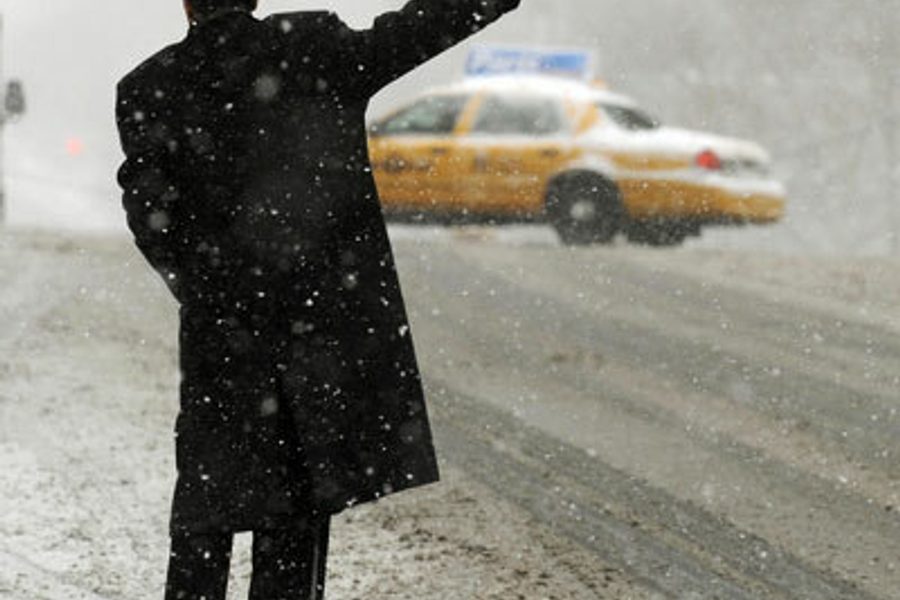
Managers of city’s apartment buildings working on contingency plans … Update: four-year contract averts strike set to strike hours later; see below.
New York City tenants have relied on their building superintendents, doorman and porters to open doors, take out their trash, fix a broken sink, and even keep a watchful eye over their kids.
But all the quotidian tasks residents take for granted may come to a halt next week: 30,000 building workers in New York City are set to strike if a new labor deal isn’t reached with building owners and managers.
Doorman, security officers, concierge, and maintenance workers represented by the Service Employees International Union (SEIU) will walk out a minute after midnight on April 21 if an agreement cannot be reached with Realty Advisory Board, a real-estate organization representing building owners and managers.
Union members have voted to authorize a strike and the negotiations will impact 3,300 apartment buildings across the city that could directly affect more than a million New Yorkers. It will be the first building workers walkout since 1991.
The workers are represented by 32BJ SEIU, the largest union for service workers in the country. With less than a week to go before their current four-year contract expires, the union stepped up their campaign efforts by holding a rally in Manhattan yesterday that drew in 10,000 workers.
Talks over a new contract have been ongoing since March 9 and both sides will meet this Thursday to start formal negotiations before the deadline next Wednesday. The union wants better wages and benefits. The realty board is urging cuts.
The 32BJ bargaining committee wants to prevent reductions in salary, health benefits, sick days and overtime while making the case for a multi-year contract that can accommodate the city’s high cost of living.
Meanwhile, the Realty Advisory Board says revenue in the New York real-estate market is down, and it’s looking to reduce costs in the wake of rising operating expenses and taxes. It has proposed fewer days-off, a slower rate of wage increases, and wants employees to begin contributing 10 percent toward their insurance premiums for the first time.
In addition, they say the building workers’ generous benefits push their pay up to $68,000, a claim SEIU disputes. The union says the average salary is $40,000.
Mike Fishman, President of 32BJ, says the recession is over and that real-estate values have grown since the last contract. He has said that the elimination of pension plans for new employees and any wage reduction is “a dealbreaker.” The president of the Reality Advisory Board, Howard Rothschild, says the proposed increases by the union is “the biggest sticking point.”
While the city is bracing for a possible strike, there are a lot of groups keeping an eye on the negotiations. The Reality Advisory Board has released a contingency manual to building owners and managers in case of a strike. The residents of New York City, especially the well-to-do who can afford to live in buildings that employ service workers, will be keeping a close eye on this.
But those who work in New York’s public sector, and SEIU members in general, might also be interested in whether the union can secure an auspicious contract.
Public sectors workers are prohibited from striking under the Taylor Law, which imposes a penalty fee that is twice the amount of an employee’s daily wage for every day out of work. A strike by the building workers union could galvanize organized labor in both the public and private sectors, writes Billy Wharton of the Bronx Country Independent Examiner.
But perhaps more important, a successful campaign by a large union local affiliated with SEIU will be a boon to the international union’s troubled image. A successful campaign to secure better wages and benefits for the country’s largest service worker union will help to assuage some fears that SEIU has lost its organizing ability.
The union could use some good news after SEIU President Andy Stern’s resignation announcement earlier this week, and the often negative attention received over its lawsuit against some of its own former leaders, who went on to form a competing healthcare workers union in California. The strike brings the attention back from the courts to issues of living wage.
UPDATE: Working right up to the last minute, building workers and apartment owners were able to reach a deal to avoid a city-wide strike that would have began on April 21. The two sides agreed to a four-year contract shortly after the April 20 midnight deadline; the contract includes a total pay increase of 10 percent (over four years) for workers, and no cuts in benefits. However, the union has to work with owners to contain healthcare costs by 2012, the New York Times reports.







